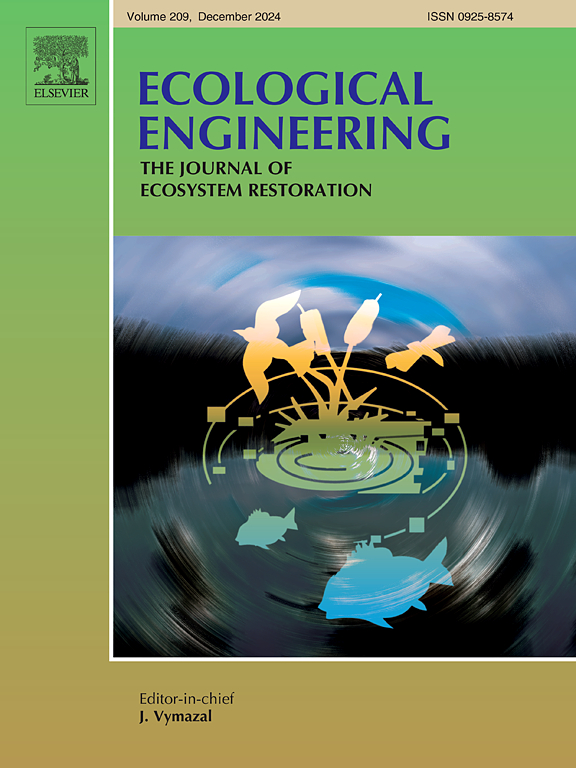Dynamic approaches to ecological restoration in China's mining regions: A scientific review
IF 3.9
2区 环境科学与生态学
Q1 ECOLOGY
引用次数: 0
Abstract
Over the past few decades, China has encountered a pronounced escalation in mining operations, precipitating many environmental and ecological complexities. These challenges have catalyzed endeavors aimed at the rehabilitation of mining sites. Despite the nation's rapid industrial advancement, environmental deterioration, characterized by soil erosion, land subsidence, and water contamination, remains pervasive. Restoration endeavors in mining regions are aimed at mitigating environmental harm, restoring landscapes, and fostering sustainable land usage. In this review, we investigate the multifaceted strategies employed by China to mitigate environmental damage, restore landscapes, and foster sustainable land utilization in mining regions. Government policies, regulations, and incentive programs underscore a commitment to international environmental objectives through restoration initiatives. The discussion encompasses afforestation, wetland restoration, and water treatment techniques employed in China, which have led to ecosystem revitalization, improved air and water quality, and socio-economic benefits for communities. Nonetheless, restoring mining areas in China presents complex challenges, stemming from the scale of restoration required and various socio-economic factors. Continued investment, collaboration, and perseverance are essential for the success of these restoration endeavors. China's initiatives in the restoration of mining areas underscore its dedication to environmental sustainability, shedding light on the complex nature of such endeavors. Consequently, we stress the significance of embracing responsible mining practices and highlight the global relevance of China's experiences in land reclamation and ecological rehabilitation.
中国矿区生态恢复的动态方法:科学综述
在过去的几十年里,中国遇到了采矿活动的明显升级,引发了许多环境和生态问题。这些挑战促进了旨在恢复采矿场址的努力。尽管国家工业发展迅速,但以水土流失、地面沉降和水污染为特征的环境恶化仍然普遍存在。矿区的恢复工作旨在减轻环境危害,恢复景观,促进土地的可持续利用。在这篇综述中,我们研究了中国在减轻矿区环境破坏、恢复景观和促进土地可持续利用方面所采取的多方面策略。政府的政策、法规和激励计划强调了通过恢复倡议实现国际环境目标的承诺。讨论内容包括中国采用的造林、湿地恢复和水处理技术,这些技术已经导致了生态系统的恢复,改善了空气和水质,并为社区带来了社会经济效益。尽管如此,由于恢复所需的规模和各种社会经济因素,中国矿区的恢复面临着复杂的挑战。持续的投资、合作和毅力是这些恢复努力取得成功的关键。中国在矿区恢复方面的举措凸显了其对环境可持续性的重视,也揭示了这类努力的复杂性。因此,我们强调接受负责任的采矿实践的重要性,并强调中国在土地复垦和生态恢复方面的经验的全球相关性。
本文章由计算机程序翻译,如有差异,请以英文原文为准。
求助全文
约1分钟内获得全文
求助全文
来源期刊

Ecological Engineering
环境科学-工程:环境
CiteScore
8.00
自引率
5.30%
发文量
293
审稿时长
57 days
期刊介绍:
Ecological engineering has been defined as the design of ecosystems for the mutual benefit of humans and nature. The journal is meant for ecologists who, because of their research interests or occupation, are involved in designing, monitoring, or restoring ecosystems, and can serve as a bridge between ecologists and engineers.
Specific topics covered in the journal include: habitat reconstruction; ecotechnology; synthetic ecology; bioengineering; restoration ecology; ecology conservation; ecosystem rehabilitation; stream and river restoration; reclamation ecology; non-renewable resource conservation. Descriptions of specific applications of ecological engineering are acceptable only when situated within context of adding novelty to current research and emphasizing ecosystem restoration. We do not accept purely descriptive reports on ecosystem structures (such as vegetation surveys), purely physical assessment of materials that can be used for ecological restoration, small-model studies carried out in the laboratory or greenhouse with artificial (waste)water or crop studies, or case studies on conventional wastewater treatment and eutrophication that do not offer an ecosystem restoration approach within the paper.
 求助内容:
求助内容: 应助结果提醒方式:
应助结果提醒方式:


